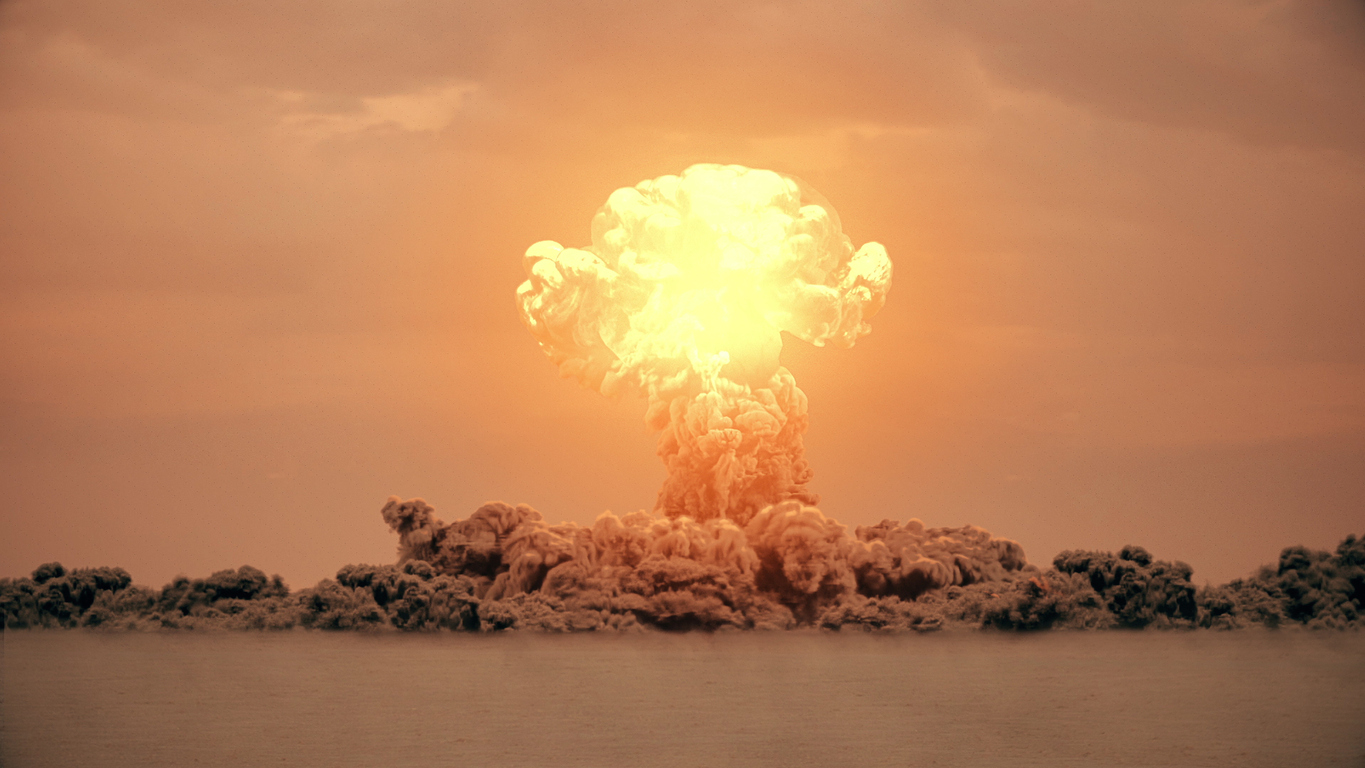The study emphasised that even a limited regional nuclear war, far smaller than the Cold War-era scenarios between the US and USSR, would not stay regional in its consequences.
Published May 11, 2025 | 11:40 AM ⚊ Updated May 11, 2025 | 11:40 AM

The study's central argument is that the atmospheric consequences of even a "regional" nuclear conflict would be global. Representative Image. (iStock)
Synopsis: A 2019 study warned that a regional nuclear exchange between India and Pakistan could unfold and devastate the global climate, agriculture and human life far beyond South Asia.
The world has been closely watching the recent escalation — and the subsequent ceasefire — between India and Pakistan, amid fears of a catastrophic confrontation between the two nuclear-armed nations.
While cross-border skirmishes and diplomatic standoffs have become routine over the decades, the current situation echoes a chilling scientific forecast made six years ago.
In 2019, a group of distinguished atmospheric scientists, nuclear experts, and environmental researchers published a groundbreaking study titled “How an India-Pakistan nuclear war could start — and have global consequences“.
Appearing in the Bulletin of the Atomic Scientists, the paper offered not just a stark warning but a scenario-based analysis of how a regional nuclear exchange between India and Pakistan could unfold and devastate the global climate, agriculture and human life far beyond South Asia.
The paper was co-authored by Alan Robock, Owen B Toon, Charles G Bardeen, Lili Xia, Hans M Kristensen, Matthew McKinzie, RJ Peterson, Cheryl S Harrison, Nicole S Lovenduski and Richard P Turco.
With each flare-up of military aggression, such as the one now unfolding along the Line of Control (LoC) and in Kashmir, the prescience of this study becomes harder to ignore.
The 2019 study began by grounding itself in the political and military postures of India and Pakistan — two countries with a history of conflict, including four wars and numerous skirmishes since partition in 1947.
What makes their rivalry particularly perilous is the possession of nuclear weapons. The study noted that both countries are increasing the size and sophistication of their nuclear arsenals, with India maintaining a declared “no first use” policy and Pakistan refusing to adopt such a posture.
Against this backdrop, the researchers constructed several hypothetical but plausible conflict scenarios based on real-world military doctrines, known deployments, and historical conflict triggers.
The study emphasised that even a limited regional nuclear war, far smaller than the Cold War-era scenarios between the US and USSR, would not stay regional in its consequences.
The study envisioned a scenario where India retaliated with conventional military force following a terrorist attack by a Pakistan-based group on Indian soil (a plausible trigger, as seen in the 2001 Parliament attack and 2008 Mumbai attacks),
Pakistan, faced with overwhelming conventional losses, chooses to use tactical nuclear weapons on the battlefield to repel Indian forces. This triggers a retaliatory nuclear response from India, leading to an escalating nuclear exchange.
In this scenario, both countries could each use up to 250 nuclear weapons, essentially their full estimated arsenals. Major cities, including Karachi, Lahore, Mumbai, and New Delhi, would become primary targets.
According to the study’s modelling, between 50 and 125 million people could be killed in the first week of conflict alone, more than the death toll of World War II. However, the study warned, this horrifying local destruction would only be the beginning of the catastrophe.
The study’s central argument is that the atmospheric consequences of even a “regional” nuclear conflict would be global. Using state-of-the-art climate models developed by NASA and NCAR (National Centre for Atmospheric Research), the researchers simulate how soot and smoke from burning cities would rise into the upper atmosphere and spread across the globe, blocking sunlight.
Here are the key findings:
One of the most chilling aspects of the study is its clear message: There is no such thing as a “contained” nuclear war. Even without invoking the possibility of NATO or China being drawn into such a conflict, the environmental damage alone would reverberate across every continent.
The researchers emphasised that the climate models used were conservative, meaning the actual effects could be worse.
Alan Robock, a professor of climate science at Rutgers University and one of the lead authors, stated that even if India and Pakistan believe a nuclear exchange could be tactical and limited, the physical consequences will not obey human political boundaries.
“This is not just a local problem,” he warned. “This is a global catastrophe.”
In the current climate of regional instability, economic slowdown, and climate stress, the impact of a large-scale nuclear war between India and Pakistan would not just be an unprecedented humanitarian crisis but also a tipping point for planetary systems.
As Robock and his co-authors argue, the only real safeguard is disarmament and the de-escalation of military doctrines that permit nuclear use in response to conventional threats. In the absence of such structural changes, the study serves as a scientific ghost of wars that have not yet happened but could — especially if its warnings continue to be ignored.
(Edited by Muhammed Fazil.)
